Advice for New Scooterists
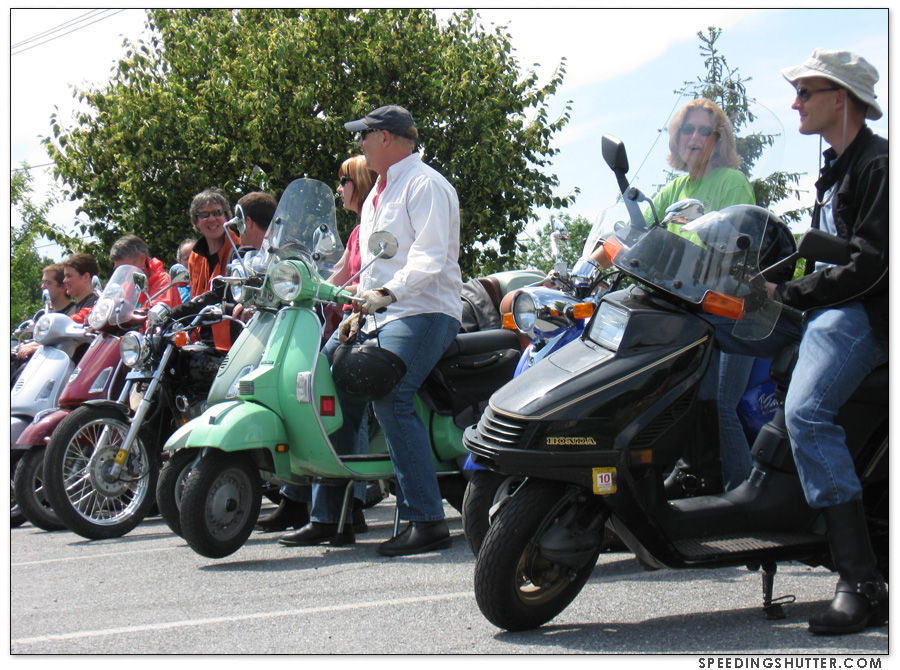
Your first weeks on your first bike are exciting and exhilarating. They’re also great at highlighting a lot of aspects of riding you were unaware of or underestimated. You have a lot to learn, and your first year in the saddle reminds you of that. This can be especially true for scooterists.
I’ve mentioned in a previous article that scooters are their own unique type of transportation. Likewise, scooterists are also unique. Most I’ve known had little to no experience riding a motorcycle before, and often had no interest at all in ever riding a traditional motorcycle. They bought a scooter because it looked fun, or it looked convenient, and because it looked approachable. Easy to learn because of the automatic transmission, and “probably safer than motorcycles, right? Because they’re slower?”
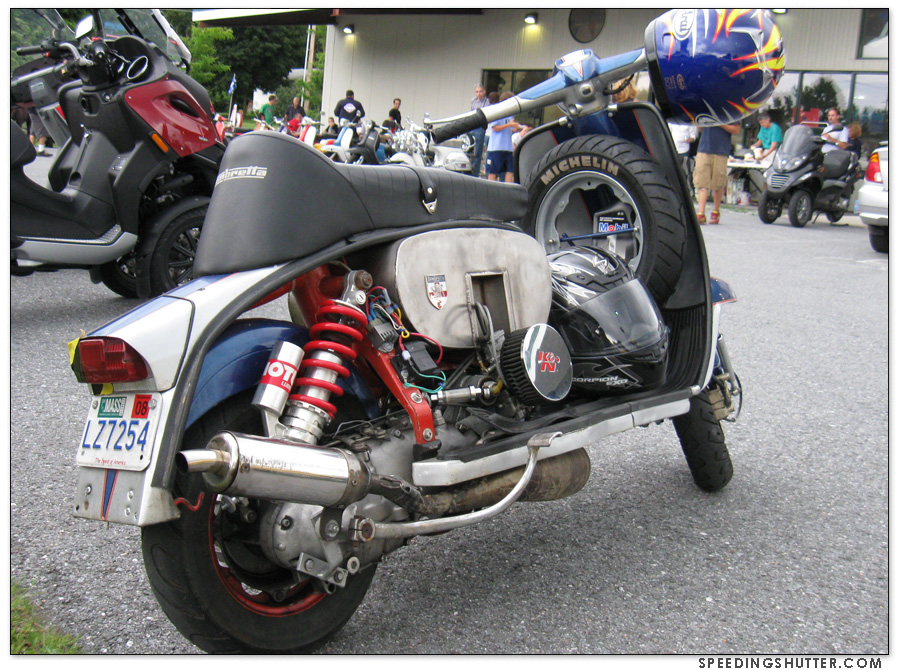
Slow Doesn’t Necessarily Equal Safer
Though speed can always be a factor, 75% of rider accidents are caused by collisions with other motor vehicles, namely cars and trucks. Your accident will happen at the speed of the car hitting you, and not the bike. Cars and trucks hit bikes all the time, frequently because the driver is distracted by something that isn’t about driving a motor vehicle on a public road. Stuff like eating, or texting, or putting on makeup, or texting, fiddling with the music, texting, or dealing with kids, dogs, or their goddamned text messages and Facebook and Instagram and Snapchat and Twitter and Marco Polo and YouTube and are you kidding me with this nonsense?? I’m going to be paralyzed and need someone else to feed me and help me go to the bathroom the rest of my life because of your YouTube video you need to shoot of yourself while driving into me?
No scooter or motorcycle can save you from these assholes, more than anything else you need to be aware, because they are not. Keep your eyes scanning the roadway. Keep in mind one or two potential escape routes should some wannabe-influencer do something cute that risks your life. I always try to stay aware of where I can escape a theoretical sudden hazard at any given moment, and have avoided dozens of accidents by doing just that.
Ask any kitchen chef, the best knife for the job is the one that feels best in your hand. If a slower bike makes you -feel- safer, then I say go with it. It doesn’t make you a lesser-rider to know and acknowledge your limits. So much of the attitude in motorcycle culture boils down to macho bullshit. Scooterists didn’t buy a Vespa to be macho. No one buys a Vespa to be macho. Just know that slowness alone isn’t going to save your hide.
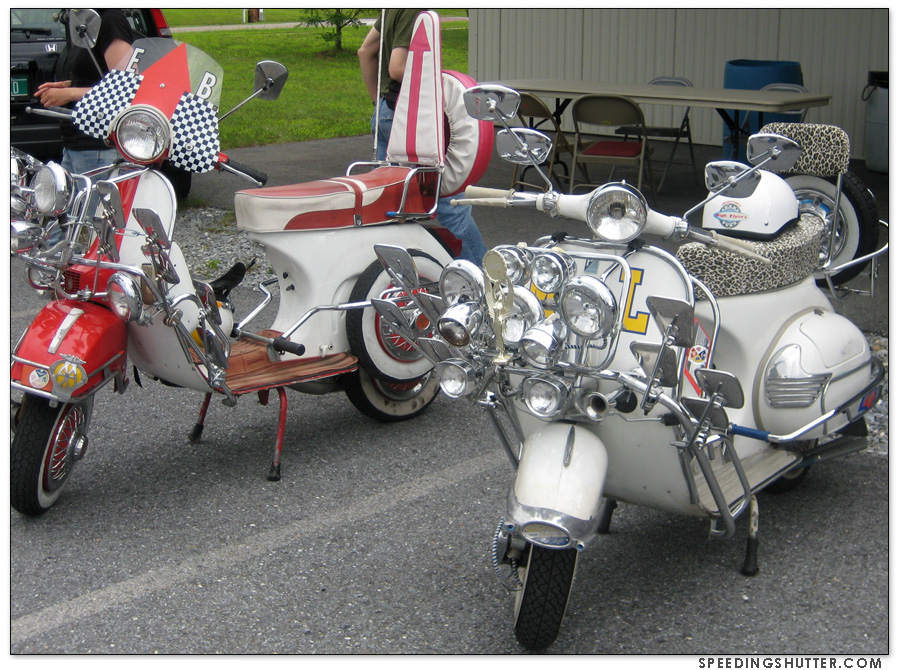
Is It a Motorcycle or a Moped?
It’s a scooter… is the snotty answer (which is frequently my preferred). When you look into which line you get in at the DMV, it’s going to depend on the engine size. If it has a combined displacement of 49cc or lower, you will register the bike as a “moped.” If the displacement is over 50cc, then it will be registered as a “motorcycle.” This is an important distinction, as it will answer this next series of questions…
Do I Need a Special License?
This varies from state to state, but in a majority of states you need only a car license (usually referred to as a Class D license) if the scooter has a 49cc or less engine, anything larger requires a motorcycle license or endorsement. Be sure to check your state laws to know where you fit.
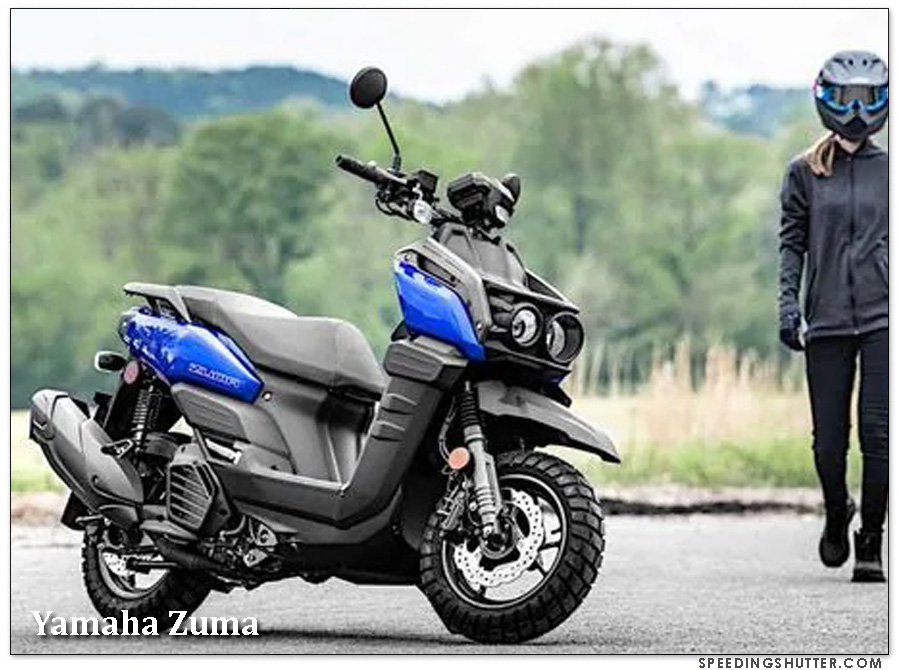
Do I Need a Helmet?
Again, this varies from state to state, and often differs between whether or not the scooter is 50cc or larger. Here in Vermont, for example, all motorcyclists are required to wear a DOT-Approved helmet, however, bikes with a 49cc or below engine size do not. Refer to this list of helmet laws by state to learn whether you’ll need one.
Should I Wear a Helmet?
A logical question that only you can answer, based on your own level of risk you’re willing to take. A popular adage in motorcycling circles is “Dress for the crash, not the ride.” What this means is that you might want to think more about safety concerns over fashion concerns, because it’s not a matter of “if” you crash but “when.” One day, if you stick with riding past the first year or two. you’re going to go down. Gary Busey wasn’t wearing a helmet when he went down in 1988, and he hasn’t been quite right ever since! You could equally be paralyzed for life if you ARE wearing a helmet, but a helmet gives you way better odds.
My opinion? The Earth is terribly-overpopulated, perhaps if fewer people wore helmets in the world there would be less competition for vital Earth resources going forward (a reminder, I will always prefer the snotty answer).
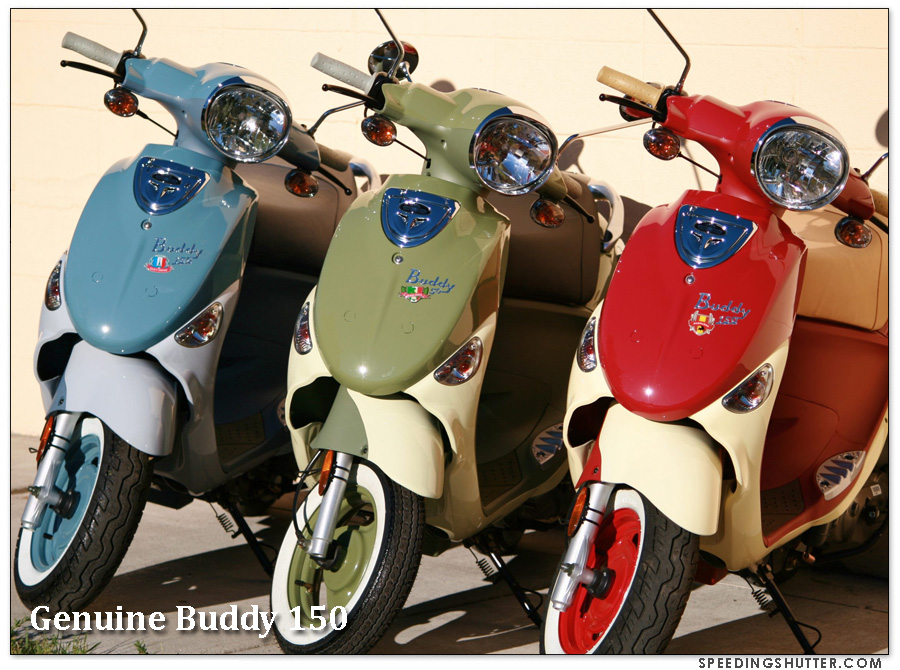
Do I Need to Insure My Scooter?
If over 50cc, yes. Yes you do, and it’s much cheaper than car insurance, especially if you live in northern states where you will only be riding half the year. Under 50cc? Probably not.
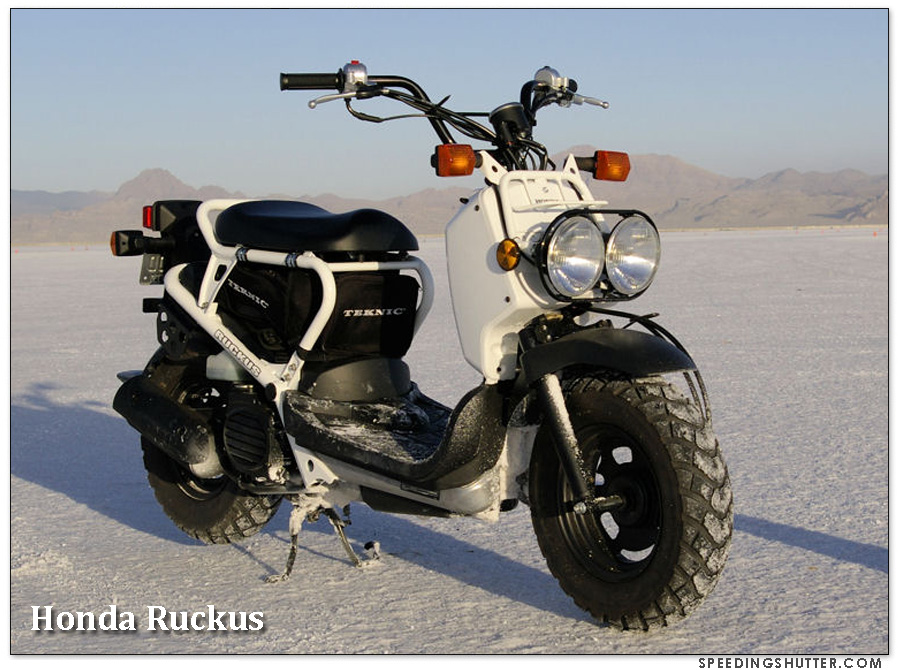
Not All Scooters are Built Alike
When buying your first scooter there are all sorts of options, a lot of brand names you’ve never heard of, and a lot of other unique variables. The first thing you look for in a bike is something that looks cool, and there’s not a damned thing wrong with that. There will always be people who tell you that bikes are not a fashion accessory and you’re a naive infant for thinking that way. Of course they are fashion accessories. Bikes are cool and you’re cool for having one, otherwise we’d all be driving minivans or something practical and boring, aka the Crocs of the automotive world. Don’t be fashion-shamed, some riders are just in denial.
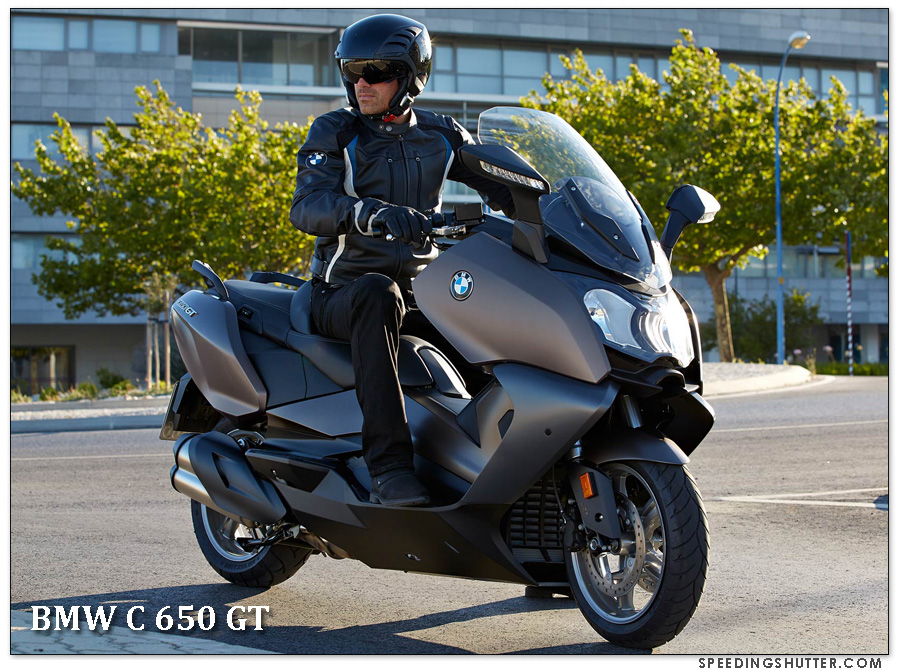
Consider what you plan to do with the bike. If you plan just to ride through city traffic and want something for an easy commute then you might be content with a 50cc bike, but if you plan riding in faster traffic or out on the open road you will need at least 150cc, or more likely 250cc. Sit on a few, make sure the bike fits your body, because not all will, especially if you are shorter, or taller. Maybe you want something retro, or even an actual vintage scooter. Both have their appeal, though I’ll recommend against a vintage scooter if this is your first bike. They’re not easy.
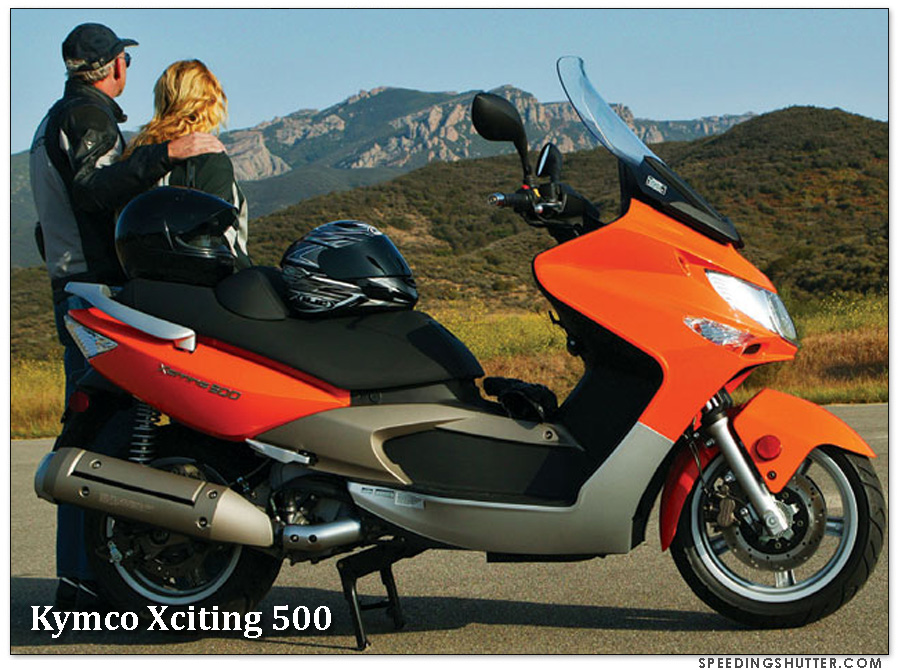
As for the brand you choose, there are a whole lot of choices. For starters, you’ll have the ubiquitous Japanese brands: Honda, Yamaha, and Suzuki (Kawasaki doesn’t make a scooter for the American market). These brands are known for reliability and ready availability of parts, it’s what they are known best for. Next you’ll have the Euro models, like Vespa, Lambretta, Aprilia, Piaggio and BMW. There are other Asian imports, like Kymco and PGO out of Singapore, Daelim out of Korea, or scooters by Genuine, which is a reputable, Chicago-based importer and re-brander of a line of Asian-made scooters. Then there are the Chinese scooters.
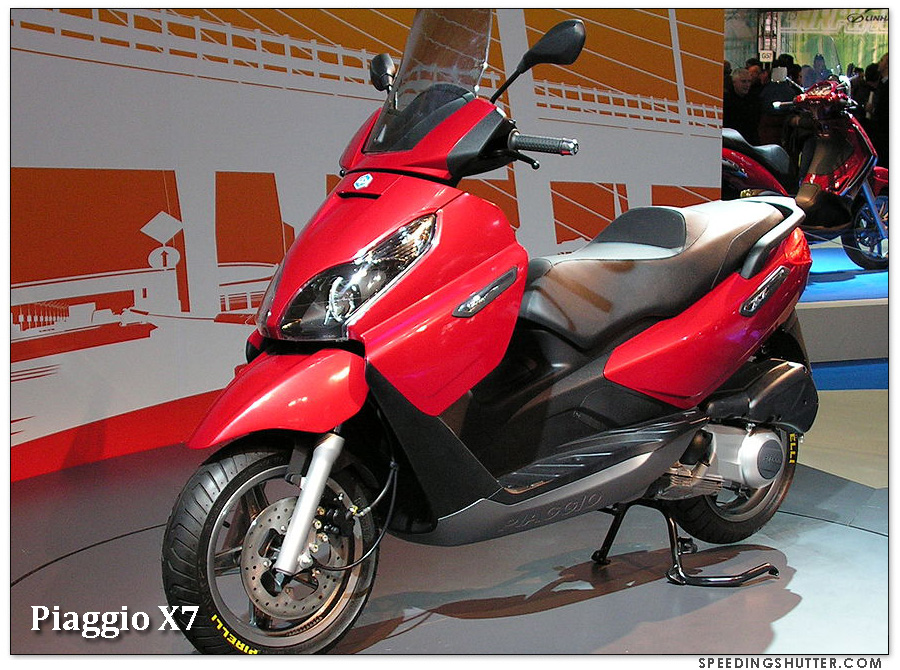
Don’t Buy a Chinese Scooter
You’re a college student and all your friends have scooters, or you’re setting up a scooter rental business in a vacation town, or you’re just really broke and need the cheapest option possible for daily transportation (not judging, life isn’t always puppies and lollipops), and a shiny chromed-up sporty-lookin’ scooter for $800 or so is hard to ignore. If you’re good with a wrench and are good at makeshifting parts and repairs, this might be a good, short-term option. Sometimes you can get a good 5,000 or 10,000 miles out of one of these, IF you maintain it and if you get one of the better examples. It’s like buying goldfish. Sometimes it’ll live 2 or 3 years. Other times it’s dead by the end of the week.
There are many reasons why these are not remotely safe or reliable modes of transit. They are generally built quickly and cheaply, frequently with stolen technology, or at the very least, mediocre clones of other manufacturers’ bikes. Quality control is all over the place, you can expect parts to be loose, missing screws or electrical connections, or parts are just non-functioning right out of the box.
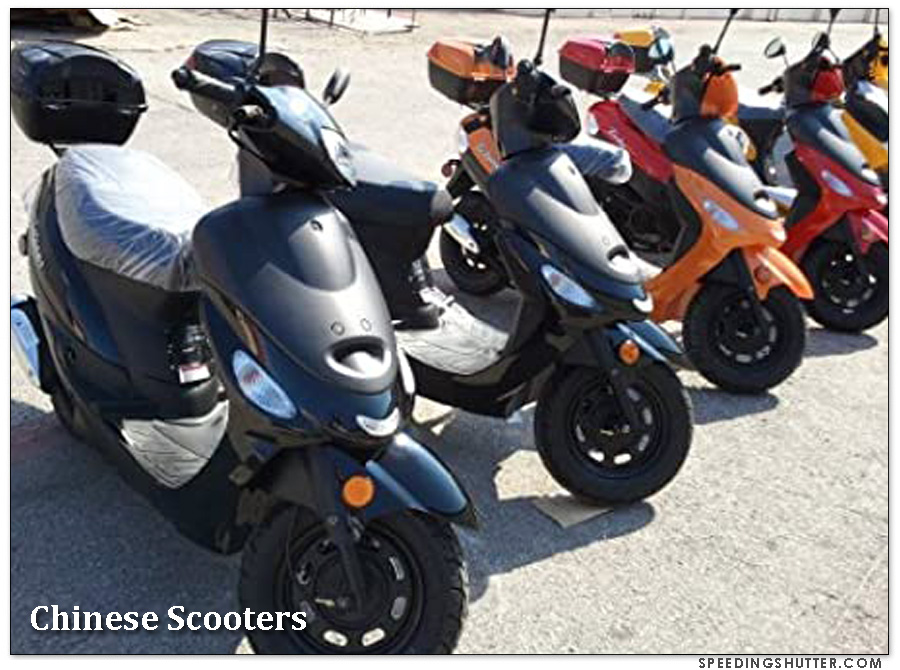
Literally, right out of the box. As in an actual box. There are no authorized dealers of these, unless you count that parking lot in the shadier part of town with a dozen Chinese scoots for sale but no actual garage on the premises. These bikes are usually mail-ordered and delivered to your house, or drop-shipped to fly-by-night parking lot dealers. You can even buy one of these on Amazon. Go ahead, see if I’m lying.
These bikes are often anonymous brands, meaning the same bike will be sold under multiple manufacturer names, none of which are the actual manufacturer. You’ll most likely not be able to find replacement parts, and nine times out of ten there will be no customer service for you to get in touch with. Buying a Chinese scooter isn’t always a nightmare in a cardboard box, but it’s a gamble. You can buy a 1,000-dollar mail order scooter, or for just another 1,500 you can get a Genuine Buddy, or Honda Metropolitan, or Kymco Like. If this is your first bike, you should consider something that isn’t a gamble, one that has access to spare parts, authorized service centers, and higher blue book resale prices, should you trade it in for a faster model in a year or two.
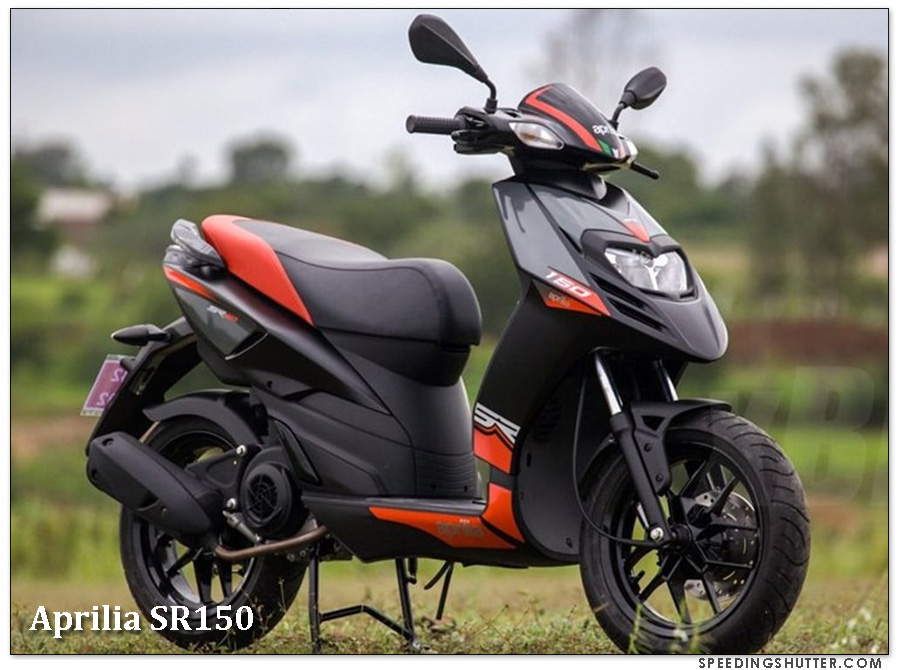
Miscellaneous Advice
Buy a cover for your scooter, rather than just leaving it out in the rain. It’s also a good theft deterrent when parked in plain sight, as most bike thieves would be more enticed by what they CAN see, over what they cannot. Speaking of thieves, scooters get stolen all the time. All. The. Time. If you’re in any sort of city you are particularly at risk. Even parking it on the street in the middle of the day, a van can ride up to it, side door slides open and two men will easily lift the lightweight scooter up and into the van and speed off within 30 seconds. I’ve seen video, it’s eye-opening. If parking at a regular spot consider chaining it to a fixed anchor point, and I’m not talking a hardware store chain, I’m talking a Kryptonite NY Fahgettaboudit chain and lock. When on a public street in a high-risk town you could chain it to something or, at the very least, put a disc lock on the wheel with a very visible attached cable around the frame. Most thieves prefer quick and easy, so if your bike looks like they’d need to expend a little energy and sweat, they’d be more inclined to just grab the NEXT bike they pass. They’re scooter thieves, after all, not captains of industry. Bikes usually come with steering column locks, where you can lock them into place. Smart idea, pretty common, and that’s why every bike thief knows you can just force the wheel to the side and the lock will break right off, so don’t expect that will save your bike. If a bike thief truly wants your bike, he’s probably going to get it, but that doesn’t mean you have to make it easy for him.
Regular maintenance means the bike will last longer and with fewer headaches. I take my bike in at the beginning of every riding season for her doctor’s check-up, and the result is 14 summers of riding without expensive fails, breaking down mid-ride, and it starts up easy every single time. That 100-200 dollar check-up every April is an extra insurance policy toward a fantastic summer riding season with minimal profanity.
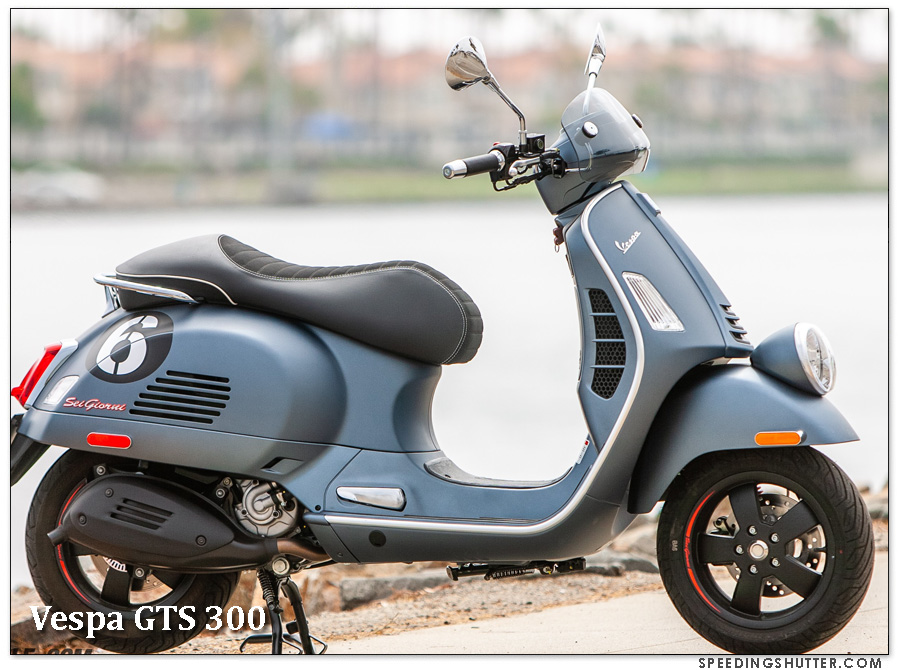
Mind your tires. Make sure there is the correct amount of air in them and that the tread is good. When they need replacing, replace them. Cycle tire health is so much more important than car tire health because you only have two of them. Your braking and cornering and swerving and riding in general is only as safe as the two tires you have underneath of you. If just one of them fails for whatever reason, losing traction or blowing out entirely, you’re going to hit the pavement and slide several yards. Not a good time, that’s probably the end of your riding season, or your bike, or even your left leg. Riding is dangerous, even if it’s “just a scooter,” unnecessary risk is foolish.
On topic of safety, consider taking the MSF basic rider safety course. It’s cheap, it’s only one weekend, at the end of it you get your motorcycle license and probably 10% off your insurance for the rest of your riding days. Even if you only have a moped-class scooter and don’t need the M endorsement on your license, it’s not about license but about the basic skills you’ll need to ride safely and proficiently. You bought a scooter so it’s easy and just like riding a bicycle, you think, but you’re just going to have to trust me that it is nothing like riding a bicycle.
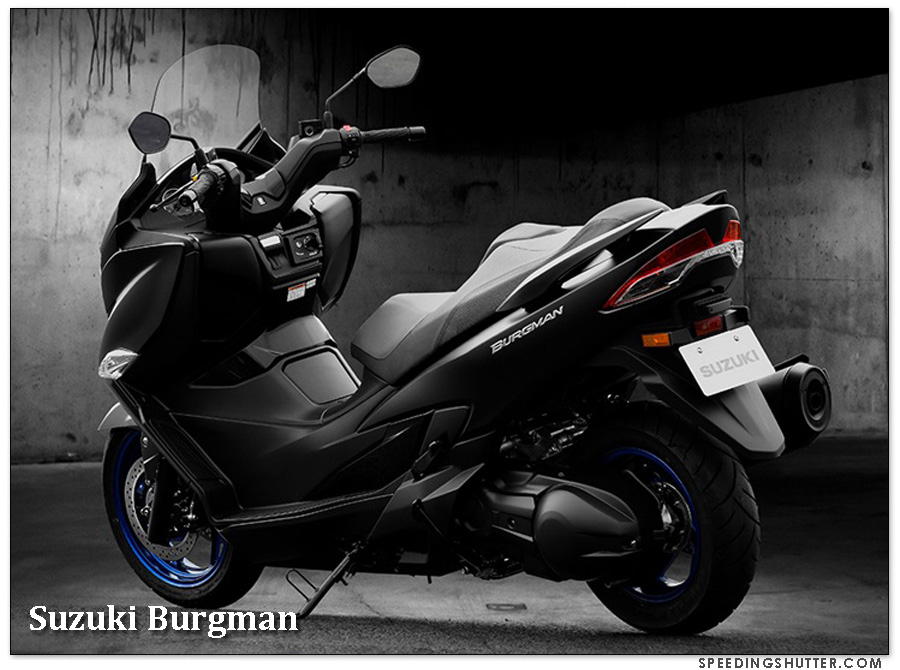
The course is not detrimental, but it’s not a terrible idea. You get that insurance discount and some practical skills, you get to network with other riders that you might enjoy riding with someday, and you’re riding around obstacle courses on a motorcycle… someone ELSE’S motorcycle! How is that not fun? “I shouldn’t lean too far I might drop the b… wait, it’s not MY bike, let’s see how far I can lean into this turn!”
On subject of leaning too deeply into a turn on a borrowed bike, think about wearing something that will protect you in a crash or a slide. I see so many scooterists out in cargo shorts, Hawaiian shirts and sandals, and think “You’re gonna have a killer scar one day.” It’s overwhelmingly likely you’re going to lay that bike down at speed one day, and pavement is like a cheese grater when you slide across it at 30 or 40mph. You’ve seen the riders out there with full-face helmets, ankle-high boots, reinforced jackets and gloves riding on a warm day, right? Think they know something?
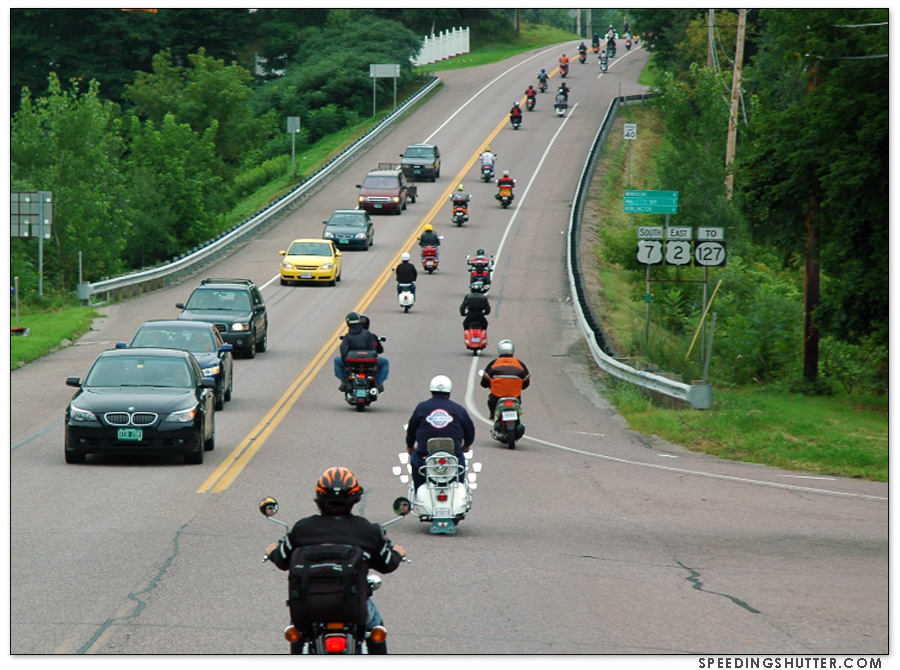
Finally, don’t worry about people giving you grief for riding a scooter and not something more macho. Most of those clowns don’t have bikes of their own anyway, so what do THEY know? We’re all riding in the same wind, in traffic, rubber-side down on two wheels. Even the junkiest Chinese moped is cooler than a four-wheeled grocery-getter. Love your ride, and it will love you back.
